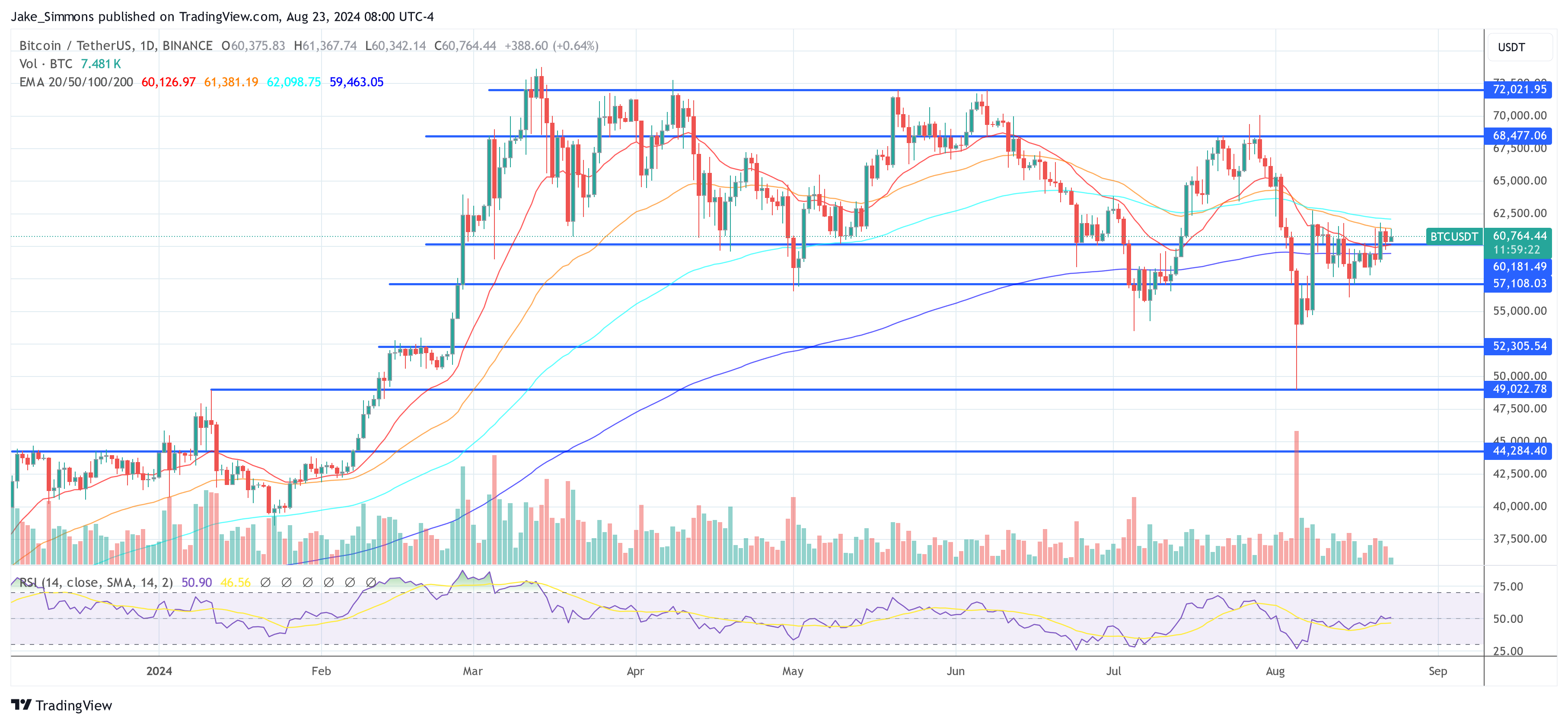Henrik Zeberg, chief macroeconomist at Swissblock, has confirmed his prediction that a US recession is inevitable, but not before a dramatic rebound in financial markets, including a substantial rally for Bitcoin to highs between $115,000 and $120,000. In his most recent analysis posted on X, Zeberg explained the cyclical nature of markets and how they align with historical economic indicators and current fiscal policy.
“REMEMBER!? In December 2022, everyone was BEARISH! I was BULLISH! We were told an ‘Imminent Crash’ was ahead – despite the fact that the market bottomed in October 2022,” Zeberg reiterated in his message. He presented its refined predictions for the major market indices and Bitcoin, pointing to an upcoming “Blow Off Top”.
Bitcoin is facing its first ever recession
A ‘blow-off top’ refers to a sharp, rapid rise in prices in the financial markets, followed by an equally sharp fall. This pattern is characterized by intense buying pressure that drives prices to extreme levels, often driven by speculative or euphoric behavior among traders. This price increase is typically unsustainable and leads to a significant sell-off as traders take profits or react to overbought conditions.
Related reading
The blow from the top predicted by Zeberg could be caused by the US Federal Reserve injecting huge amounts of liquidity into the circulation to prevent a recession. Based on this, Zeberg predicts the S&P 500 will rise to 6,100-6,300, the Nasdaq to 24,000-25,000, the Dow Jones Industrial Average to around 45,000 and Bitcoin to $115,000-120,000.
Zeberg’s bullish stance is in stark contrast to his gloomy forecast for the post-rally period. “Now… we’re not at the top yet! But the recession is coming – and it will be the worst since 1929. Major bear market (in two phases: deflationary and stagflationary – separated by a mid-term recovery when the Fed steps in in 2025),” he explained, indicating that a complex recession cycle is influenced by both market dynamics and Federal Reserve (Fed) policy.
The economist’s skepticism about the effectiveness of the Federal Reserve’s upcoming rate cuts is rooted in a detailed critique of similar historical measures. Despite market expectations of a 25 basis point cut at the next FOMC meeting in September – a move supported by 73.5% of market participants (according to the CME FedWatch tool), while a smaller share (26.5%) a more aggressive 50 base expected. points reduction – Zeberg is still not convinced that these will prevent recessionary pressures.
Related reading
“But… but… Fed rate cuts…. ?? The global economy is breaking. The US recession will start in December 2024,” Zeberg said, reflecting his belief that short-term liquidity injections are insufficient to counter deeper economic downturns. He points to liquidity cycle figures comparable to those of 2007, and questions the effectiveness of such strategies in preventing the 2008 financial crisis.
Furthermore, Zeberg highlights the recent end of the U.S. reversal. 2- and 10-year government bond yields are traditionally seen as a predictor of economic downturn. The inversion, where short-term rates exceed long-term rates, typically signals investor uncertainty about the short-term economic outlook.
Another pillar of Zeberg’s argument is the recent labor market data. The U.S. Bureau of Labor Statistics has revised down its estimates of total employment for March 2024 by 818,000 – the largest revision in fifteen years – indicating significant weakness in the labor market, much more pronounced than initial estimates suggested. “The economy is much weaker than expected,” Zeberg said.
At the time of writing, Bitcoin was trading at $60,764.

Featured image created with DALL.E, chart from TradingView.com

